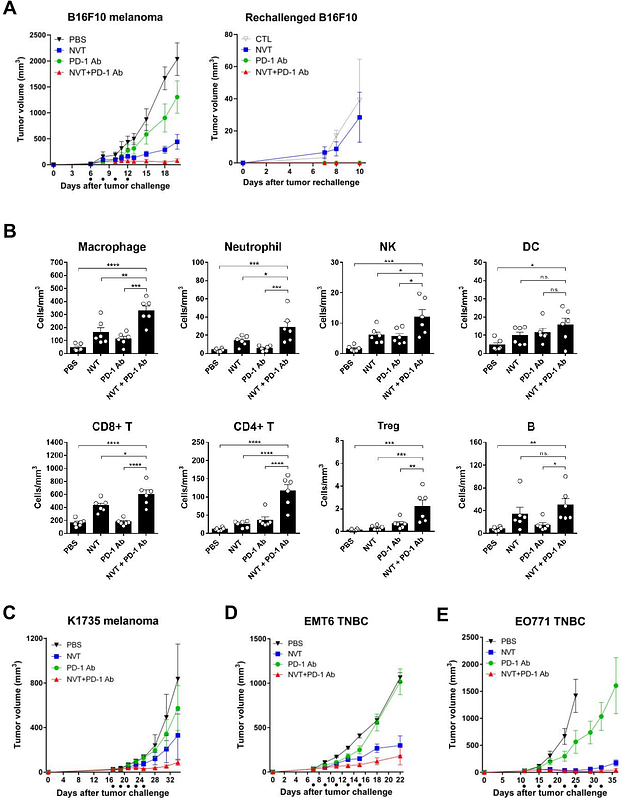The defined TLR3 agonist, Nexavant, exhibits anti-cancer efficacy and potentiates anti-PD-1 antibody therapy by enhancing immune cell infiltration.

The defined TLR3 agonist, Nexavant, exhibits anti-cancer efficacy and potentiates anti-PD-1 antibody therapy by enhancing immune cell infiltration.
Kim, D.; Lee, S.-H.; Choi, Y.-H.; Kang, S.-M.; Lee, M.-G. L.; Hong, S.-B.; Perouzel, E.; Debin, A.
AbstractNexavant has been reported as an alternative to the TLR3 agonist of Poly(I:C) and its derivatives. The physicochemical properties, signaling pathways, anti-cancer effects, and mechanisms of Nexavant were investigated. Nexavant \'s distinct nature, compared to Poly(I:C), was evident through precise quantification, thermostability, and resistance to RNase A. Unlike Poly (I: C) which activates TLR3, RIG-I and MDA5, Nexavant stimulates the signaling through TLR3 and RIG-I but not MDA5. Intratumoral Nexavant treatment led to a unique immune response compared to Poly(I:C), immune cell infiltration, and suppression of tumor growth in various animal cancer models. Nexavant therapy outperformed anti-PD-1 antibody treatment in all tested models and showed a synergistic effect in combinational therapy, especially in well-defined cold tumor models. The effect was similar to Nivolumab in a humanized mouse model. Intranasal instillation of Nexavant recruited immune cells (NK, CD4+ T, CD8+ T) to the lungs, suppressing lung metastasis and improving animal survival. Our study highlighted Nexavant\'s defined nature for clinical use, unique signaling pathways, and its potential as a standalone anti-cancer agent or in combination with anti-PD-1 antibody.